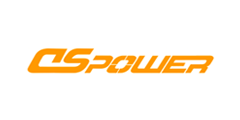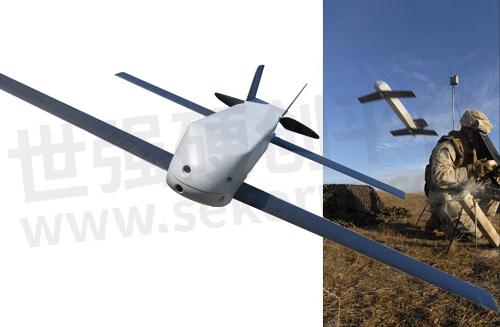Application of DSpower Servo in Unmanned Aerial Vehicles (UAV)


1. Working principle of servo
A servo is a type of position (angle) servo driver, consisting of electronic and mechanical control components. When the control signal is input, the electronic control part will adjust the rotation angle and speed of the DC motor output according to the controller’s instructions, which will be converted into displacement of the control surface and corresponding angle changes by the mechanical part. The output shaft of the servo is connected to a position feedback potentiometer, which feeds back the voltage signal of the output angle to the control circuit board through the potentiometer, thereby achieving closed-loop control.

2. Application on unmanned aerial vehicles
The application of servos in drones is extensive and critical, mainly reflected in the following aspects:
1. Flight control (rudder control)
① Heading and pitch control: The drone servo is mainly used to control the heading and pitch during flight, similar to the steering gear in a car. By changing the position of the control surfaces (such as rudder and elevator) relative to the drone, the servo can generate the required maneuvering effect, adjust the attitude of the aircraft, and control the flight direction. This enables the drone to fly along a predetermined route, achieving stable turning and takeoff and landing.
② Attitude adjustment: During flight, drones need to constantly adjust their attitude to cope with various complex environments. The servo motor precisely controls the angle changes of the control surface to help the drone achieve rapid attitude adjustment, ensuring flight stability and safety.
2. Engine throttle and throttle control
As an actuator, the servo receives electrical signals from the flight control system to precisely control the opening and closing angles of the throttle and air doors, thereby adjusting the fuel supply and intake volume, achieving precise control of engine thrust, and improving the flight performance and fuel efficiency of the aircraft.
This type of servo has very high requirements for accuracy, response speed, earthquake resistance, high temperature resistance, anti-interference, etc. Currently, DSPOWER has overcome these challenges and achieved mature applications for mass production.
3. Other structural controls
① Gimbal rotation: In unmanned aerial vehicles equipped with gimbal, the servo is also responsible for controlling the rotation of the gimbal. By controlling the horizontal and vertical rotation of the gimbal, the servo can achieve precise positioning of the camera and adjustment of the shooting angle, providing high-quality images and videos for applications such as aerial photography and surveillance.
② Other actuators: In addition to the above applications, servos can also be used to control other actuators of drones, such as throwing devices, apron locking devices, etc. The implementation of these functions relies on the high precision and reliability of the servo.
2. Type and selection
1. PWM servo: In small and medium-sized unmanned aerial vehicles, PWM servo is widely used due to its good compatibility, strong explosive power, and simple control action. PWM servos are controlled by pulse width modulation signals, which have fast response speed and high accuracy.
2. Bus servo: For large drones or drones that require complex actions, bus servo is a better choice. The bus servo adopts serial communication, allowing multiple servos to be centrally controlled through a main control board. They typically use magnetic encoders for position feedback, which has higher accuracy and longer lifespan, and can provide feedback on various data to better monitor and control the operational status of drones.
3. Advantages and Challenges
The application of servos in the field of drones has significant advantages, such as small size, light weight, simple structure, and easy installation. However, with the continuous development and popularization of drone technology, higher requirements have been put forward for the accuracy, stability, and reliability of servos. Therefore, when selecting and using servos, it is necessary to comprehensively consider the specific needs and working environment of the drone to ensure its safe and stable operation.
DSpower has developed the “W” series servos for unmanned aerial vehicles, with all metal casings and super low temperature resistance up to – 55 ℃. They are all controlled by CAN bus and have a waterproof rating of IPX7. They have the advantages of high precision, fast response, anti vibration, and anti electromagnetic interference.
In summary, the application of servos in the field of unmanned aerial vehicles is not limited to basic functions such as flight control and attitude adjustment, but also involves multiple aspects such as executing complex actions and providing high-precision control. With the continuous advancement of technology and the expansion of application scenarios, the application prospects of servos in the field of unmanned aerial vehicles will be even broader.
- +1 Like
- Add to Favorites
Recommend
- DSpower Opens up Overseas Markets, Focusing on Hannover MESse in Germany
- DSPOWER Durable 20KG Class Semi-aluminum Frame Metal Tooth Servo DS-S020B Has a Maximum Torque of 28kgf.cm
- DSPOWER 24V High Voltage All-metal Brushless Servo FS-R009F Torque up to 150kg
- DSPOWER Lanuched DS-E025A 3KG Clutch L-type Serial Building Block Steering Servo Motor
- DSpower Sweeping Robot Servo with High Torque Enables Precise Movement Control and Efficient Cleaning Operations in Sweeping Robots
- DSPOWER Launched the 2g Hollow Cup Micro Servo Ds-m005 with Small Body and Large Force Torque ≥0.35kgf·cm
- How Is the Servo Controlled Through PWM?
- What Kind of RC Servo Are Suitable for Remote-controlled Cars?
This document is provided by Sekorm Platform for VIP exclusive service. The copyright is owned by Sekorm. Without authorization, any medias, websites or individual are not allowed to reprint. When authorizing the reprint, the link of www.sekorm.com must be indicated.





























































































































































































































































































































































































































































































































































































































































































































































































































































































